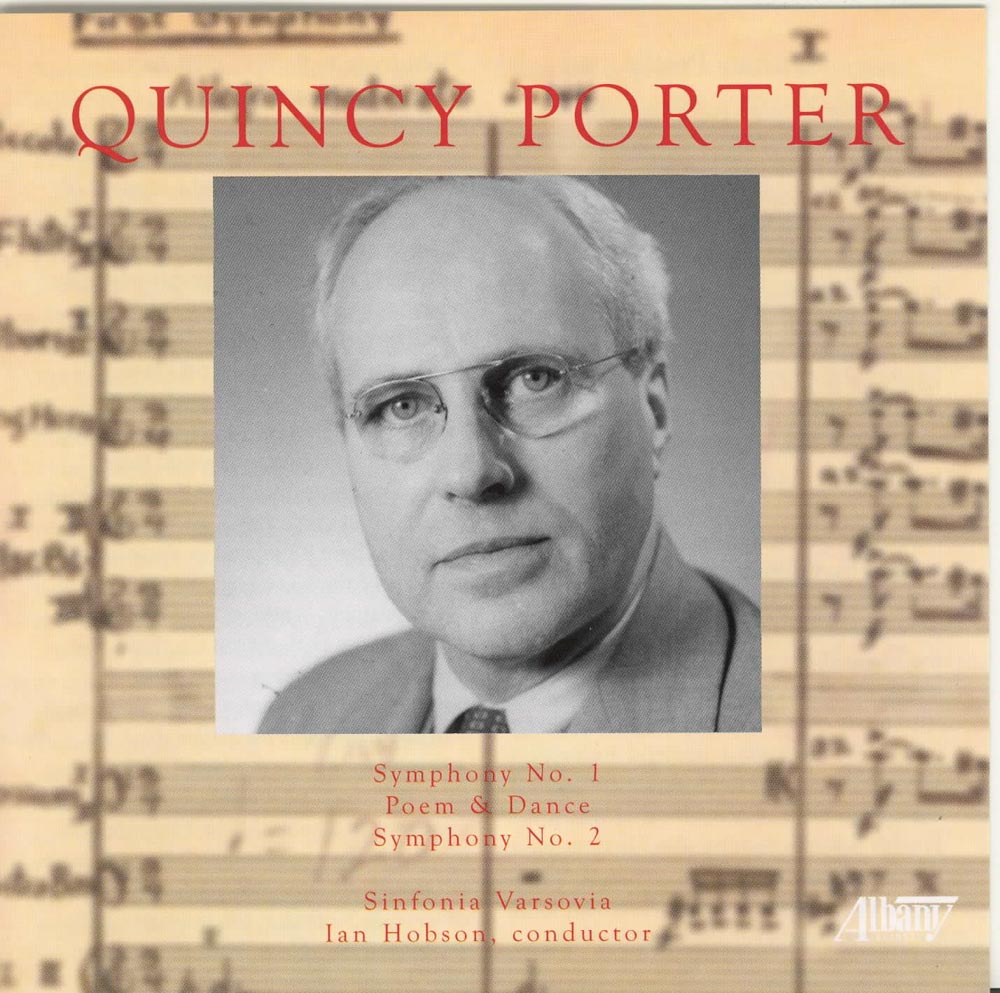Porter: Symphonies Nos. 1 & 2
Sinfonia Varsovia, Ian Hobson (conductor)
The Pulitzer Prize-winning composer Quincy Porter was born in New Haven, Connecticut, the son and grandson of Yale professors. He too went to Yale where he studied music with Horatio Parker. He also studied in Paris with Vincent D’Indy and in Manhattan and Cleveland with Ernest Bloch. Bloch helped him get a job at the Cleveland Institute of Music where he taught theory and also played the viola in the ambitious de Ribaupierre Quartet. He returned to Paris in 1928, and while he did not study with Nadia Boulanger, he did show her his 1930 Piano Sonata. “For a staid New Englander, this is an unusual climax,” she is supposed to have said. Back in the United States, the staid and bespeckled New Englander moved from Cleveland to upstate New York, teaching music at Vassar College, and then to Boston, where he served as dean and then director of the New England Conservatory – taking time to help found, along with Aaron Copland and several other leading composers, the American Music Center in Manhattan. In 1946, the year his father died, he returned to his alma mater. Until retiring in 1965, at Yale he stayed, first as Battell Professor of Theory at the Music School, then as master of Pierson College – barely enduring the presence of a certain other Yale professor, the internationally celebrated composer, Paul Hindemith; Yankee conservative and German modernist remained professional antagonists until Hindemith went on to Zurich in the early 1950s. It is from his overall loyalty to tradition and his neoclassical esthetic bent that the distinguishing qualities of Quincy Porter’s music derive – its crystalline clarity of line, its balance and lyricism. He could certainly wield contemporary devices; mixed meters, keylessness, flashy rhythmic complexity. But he exulted in and excelled at music’s more private expressiveness, especially the intimacy afforded by small ensembles and song. His contributions to chamber music earned him the Elizabeth Sprague Coolidge Medal in 1943, and critics rate his ten string quartets among the finest produced in 20th century America. His ability to fashion handsomely controlled, flowing passages as well as volcanic surges of intensity is equally evident in his viola, violin and harpsichord concertos and the Concerto Concertante (winner of the 1954 Pulitzer Prize) – and also in the three orchestral pieces featured on this CD.
Track Listing
| Title | Composer | Performer |
|---|---|---|
| Symphony No. 1 | Quincy Porter | Sinfonia Varsovia, Ian Hobson, conductor |
| Symphony No. 2 | Quincy Porter | Sinfonia Varsovia, Ian Hobson, conductor |
| Poem and Dance | Quincy Porter | Sinfonia Varsovia, Ian Hobson, conductor |
Reviews
- “
"Harmonically, rhythmically vibrant music....sympathetically played."
- “
"these two symphonies...are eventful, rhythmically interesting, melodically rich, full of feeling, and totally engrossing."
*Album cover provided for Editorial use only. ©Albany Records. The Albany Imprint is a registered trademark of PARMA Recordings LLC. The views and opinions expressed in this media are those of the artist and do not necessarily represent or reflect the views and opinions held by PARMA Recordings LLC and its label imprints, subsidiaries, and affiliates.

